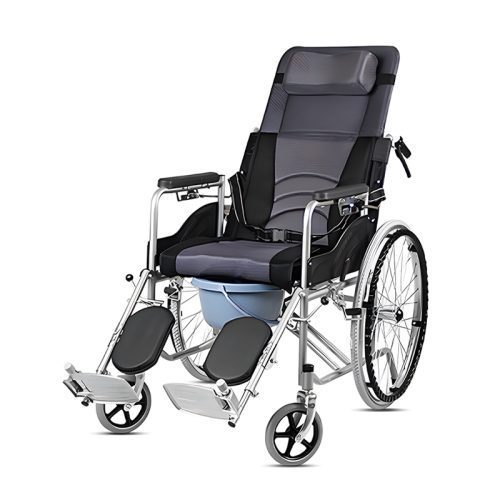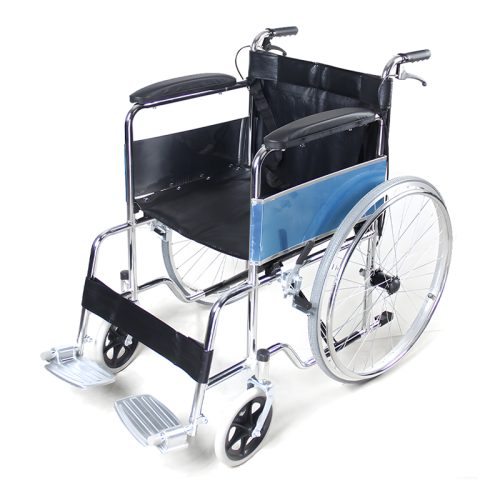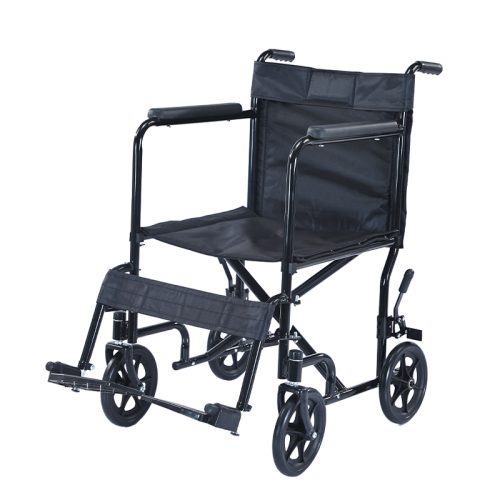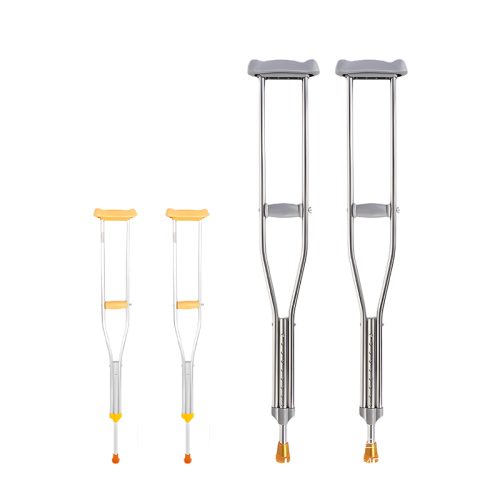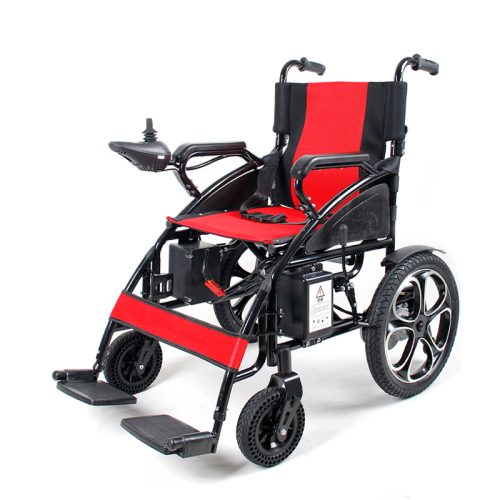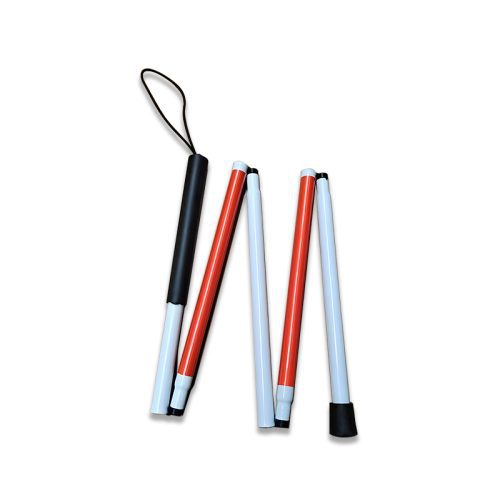
- Scaun cu rotile
Manualul esențial pentru distribuitorii de scaune cu rotile
- Prin kelingmedical
### Types of Wheelchairs
There are several wheelchair models available because each one serves distinct user requirements. By understanding the various wheelchair types distributors can serve more customers and provide solutions that fit their specific needs.
#### 1. **Cărucioare cu rotile manuale**
The most prevalent wheelchair style remains the manual wheelchair. The user or a caregiver operates manual wheelchairs by using hand rims on the back wheels. These wheelchairs work well for people who can propel themselves because they have enough upper body strength.
– **Key Features:**
– Lightweight and portable
– Customizable to fit the user’s needs
– Affordable
– Ideal for indoor use and short trips
– **Considerations for Distributors:**
Provide multiple seat sizes with different widths and depths to accommodate various body dimensions.
Choose wheeled frames that weigh less to ensure they are easy to transport and maneuver.
To improve user comfort add accessories like footrests and armrests.
#### 2. **Electric or Powered Wheelchairs**
Electric wheelchairs which people also call powered wheelchairs exist to aid users who lack manual propulsion abilities. The motors and battery systems in these wheelchairs help users move around effortlessly by reducing physical effort.
– **Key Features:**
– Powered by rechargeable batteries
– Joystick or touchpad control for maneuvering
– Suitable for both indoor and outdoor use
– Adjustable settings for comfort and posture
– **Considerations for Distributors:**
Offer numerous control options including joysticks, sip-and-puff devices and touchpads to meet the needs of users with various dexterity levels.
– Focus on battery life and charging times.
Provide multiple seating options to maintain long-term comfort for users.
#### 3. **Transport scaune cu rotile**
Transport wheelchairs offer lightweight construction for short-distance mobility needs. A caregiver pushes transport wheelchairs instead of users propelling them. Medical facilities and airports frequently use these transport wheelchairs.
– **Key Features:**
– Ultra-lightweight for easy transport
– Compact design
– Suitable for short trips and travel
– **Considerations for Distributors:**
– Focus on easy folding mechanisms for portability.
Select wheelchairs that provide uncomplicated storage solutions to meet the needs of users who live in small spaces.
The wheelchair design must feature secure footrests and armrests to ensure user comfort.
#### 4. **Reclining and Tilt-in-Space Wheelchairs**
When users lie back in reclining wheelchairs they receive both pressure relief and enhanced comfort. Tilt-in-space wheelchairs permit users to move the whole seat and back simultaneously which serves individuals who remain seated for extended periods.
– **Key Features:**
– Adjustable seating for comfort and pressure relief
People who suffer from pressure sores or poor circulation find reclining and tilt-in-space wheelchairs beneficial.
– Often equipped with specialized backrests and footrests
– **Considerations for Distributors:**
Users should find the reclining and tilting mechanisms straightforward to operate.
Offer models that include headrests and enhanced support to maintain proper posture.
Customize wheelchairs according to the distinct health requirements of individual users.
When selecting wheelchairs customers need to evaluate features that affect comfort and usability.
When selecting wheelchairs for your customers, consider the following features that impact comfort, usability, and durability:
#### 1. **Seat Width and Depth**
For a wheelchair to provide comfort its seat width and depth need to be considered. Discomfort arises from seats that are either too narrow or too wide which can result in posture issues or pressure sores. Wheelchairs should be available in multiple sizes with options to customize according to user needs.
– **Considerations for Distributors:**
Offer multiple seat width options to fit different body shapes and sizes.
Choose wheelchairs with adjustable seat depth to help maintain proper posture.
#### 2. **Wheels and Tires**
The type of wheels determines how effectively a wheelchair can be navigated. The performance of a wheelchair depends on the type of wheels used as well as their size and the material of the tires attached to them.
– **Considerations for Distributors:**
It’s important to select wheels that last long and work well both indoors and outdoors.
Distribute various tire options including solid, pneumatic and gel based on user requirements.
Opt for bigger wheels to enhance mobility particularly when using wheelchairs outdoors.
#### 3. **Frame Material**
The choice of material for the wheelchair frame affects how much it weighs and how durable and portable it remains. The most common materials used for wheelchair frames are aluminum along with steel and titanium.
– **Considerations for Distributors:**
Choose lightweight frames to ensure wheelchair users can transport and move them easily.
Steel and titanium frames offer superior strength and durability but come with increased weight for users who need stronger wheelchair frames.
#### 4. **Footrests and Legrests**
The proper function of wheelchairs depends heavily on the inclusion of footrests and legrests for user comfort. Wheelchair footrests and legrests must offer adequate support for feet and legs while being adjustable, especially for users who sit in their wheelchair for extended periods.
– **Considerations for Distributors:**
Distribute footrests and legrests with adjustable features to achieve better ergonomic positions.
Wheelchair users who need to reduce swelling should have access to legrests that can be elevated.
#### 5. **Armrests**
Wheelchair users need armrests for support and stability especially during transfers in and out of the chair.
– **Considerations for Distributors:**
– Offer armrests that are padded for comfort.
When selecting wheelchair models opt for those with adjustable armrests to support users at different heights.
### Wheelchair Maintenance and Repairs
The safety and functionality of wheelchairs depend on consistent maintenance which keeps them comfortable for users. Distributors should teach customers how to maintain their wheelchairs to extend their useful life.
– **Regular Cleaning**: Maintain your wheelchair by cleaning it often with special attention to the wheels, seat cushion and footrests using a mild soap solution before drying all parts thoroughly afterward.
– **Check for Wear and Tear**: Inspect wheelchair components such as wheels, tires, footrests, and brakes regularly to spot wear and tear and replace damaged parts immediately to prevent accidents.
– **Battery Maintenance (for Powered Wheelchairs)**: Power wheelchair batteries should be charged on a routine basis while users should monitor for battery deterioration and replace batteries when they fail to maintain power.
—
## Concluzie
Distributors who wish to provide dependable wheelchair products must understand the features, types, and maintenance requirements of wheelchairs. By providing several different wheelchair options such as manual, powered, and transport models you can meet the specific needs of people who require mobility support. Providing customers with essential accessories and maintenance support improves their business satisfaction and trust.
—
## ÎNTREBĂRI FRECVENTE
Manual wheelchairs depend on physical effort from the user to move while powered wheelchairs function with electric motors and batteries to provide movement.
Users must propel manual wheelchairs themselves or with a caregiver assistance while powered wheelchairs move through motors and battery power which suits people with limited upper body strength.
Which wheelchair model should I select to meet my customers’ needs?
When selecting a wheelchair consider the mobility level of the user as well as whether it will be used indoors or outdoors and specific medical requirements. Ensure maximum comfort through adjustable and customizable features.
What maintenance advice exists for wheelchairs?
Perform frequent cleaning and thorough inspections of the wheelchair focusing specifically on the wheels, tires and footrests. Users must keep powered wheelchair batteries charged and replace them when needed.
What is the replacement frequency for wheelchair components?
It depends on the usage. Components such as tires, footrests, and brakes need regular inspection and replacement in high-usage environments whenever wear signs show up.
Quality wheelchair suppliers for my business can include reputable manufacturers and wholesalers dedicated to medical equipment.
Getting wheelchairs from trusted manufacturers and suppliers guarantees your customers receive products that are both durable and adhere to safety standards.
—
Your distribution credibility in the medical equipment market will increase when you supply your customers with this comprehensive wheelchair manual which supports their mobility needs.
📧 E-mail: inquiry@shkeling.com
🌐 Site web: www.shkeling.com.cn
Așteptăm cu nerăbdare să construim un parteneriat de succes cu dumneavoastră!


